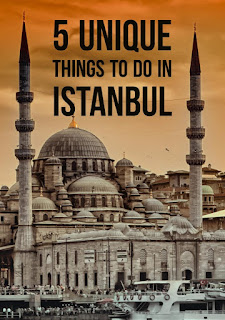The Ney (flute) that is mentioned in Rûmî’s stories in fact representsthe perfect man (Insân-i Kâmil).The stages a reed goes through from the reed bed to becoming a ney portrays the maturation of a human being, a representation of the steps of purifying the nafs (lower self) and refining the heart.
In the same way that the ney is severed from the reed bed and this separation causes it to lament in pain, the perfect man, who has come from the realm of souls and enters a body made out of clay, known as the cage made of flesh, yearns for the original realm. Through this yearning a human being goes through ascetic discipline (riyâda), meditation (murâqaba), reflection (tafakkur), Divine love and tribulations until he reaches maturity and finds perfection.-The ney that is removed from the reed bed is carefully cut by the craftsman. Then the inside is removed and the reed is left to dry. Later, holes are burnt through and rings are placed at the top and bottom. After being left in this state for some time,when the neyzen breathes into it, the ney starts to send out beautiful sounds, as well as wonder and wisdom, in accordance with the listener’s spiritual level.
A human being goes through similar stages on the path to perfection. Perfect men are chosen from among other men according to certain criteria. One of the most important attributes of the Prophets is that they are “chosen”. They are cleansed of mortal bonds and preoccupations through various methods of nurturing. On the path of special religious training which is called sayr u suluk, they face hardships, misfortunes and trials, which are necessary to gain patience, and they mature by following the path of “revelation”. Finally, they become instruments in which Allah’s art, wisdom and might are manifested. People yield to the spiritual wisdom that emanates from them and they start to proceed in the direction of unity with the beloved.
A figurative story is narrated in the Mawlawi sources about the first appearance of the ney, this instrument that shares the same fate as humans, and its use:
The Prophet entrusted a drop of the ocean of secrets and wisdom that had been bestowed upon him by Allah Almighty to ‘Alî (r.a), who is known as the Gate of Knowledge, strictly warning him not to reveal these secrets. Ali (r.a) could not bear what had been entrusted to him and was crushed by its great weight. He took to the desert. He revealed what he had kept inside him down a black well. In time, the well flowed with water. Reeds started to grow in the water that overflowed from the well. A shepherd, realizing that these reeds made beautiful sounds when the wind blew through them, cut one and made a ney. The sound coming from this ney is so heartfelt and emotional that everyone fell in love with the deep, poignant and soulful tunes. They started laughing and crying at the sound. Soon this shepherd’s reputation spread and the Arab tribes started to gather around to listen to him. (Ahmed Eflâkî, Âriflerin Menkıbeleri, II, 440)
Hence, Mawlânâ’s Mathnawi is the written form of these pleasant tunes and the mystery they carry within them. For this reason, those who read the Mathnawi find themselves forced to admit that as the meanings deepen, they carry manifold mysteries and wisdom. Mawlânâ, who observed the profound ocean contained in a small drop, exhibits this to us in accordance with our capacity, and there are great seas and even oceans in these verses, each of which is considered to be a small drop. Although the Mathnawi carries deep meanings and wisdom, Mawlânâ is lamenting the fact that he cannot explain his secrets as he wishes. In this regard, contemplating the first recipient of Mathnawi, he says: “I wrote this Mathnawi for Husâmeddîn!”
Another time, pointing out the infinity of Allah’s knowledge and wisdom, he says: “I had the Mathnawi written down as an abstract. If I were to further interpret the mysteries and the wisdom, forty camels would have had difficulty carrying them.”To explain the inability of most humans to grasp the spiritual meanings in this work, a sage who dearly loved Mawlâna said:
“We listened to the cries of Rûmî’s ecstasy. It is impossible to see the depths of the sea of passion that he dived into. We only see what has come to the surface from the depths. We only acquire the cries of love that he has uttered, but not his love. It is this alone that we are trying to explain while we lisp. Only Rûmî has been able to dive into the sea of peace. We are left with the sounds that come through the storm of his ecstasy. Alas! We think he is Mawlânâ!”
The ney (also nai, nye, nay) is a light-brown flute that figures prominently in Middle Eastern music. In some of these musical traditions, it is the only wind instrument used. It is a very ancient instrument, with depictions of ney players appearing on wall paintings in the Egyptian pyramids and actual neys being found in the excavations at Ur. This indicates that the ney has been played continuously for 4,500–5,000 years, making it one of the oldest musical instruments still in use. It is a forerunner of the modern flute.


























































